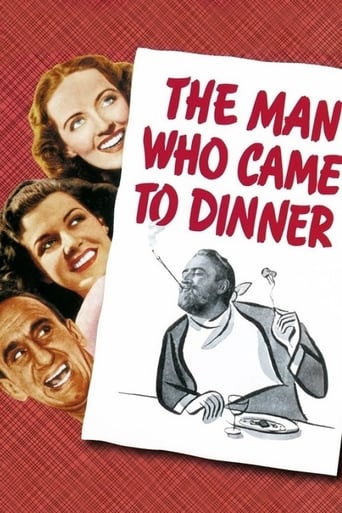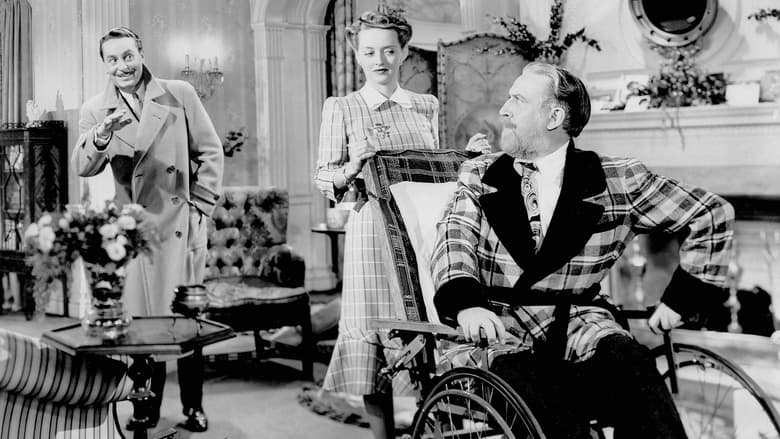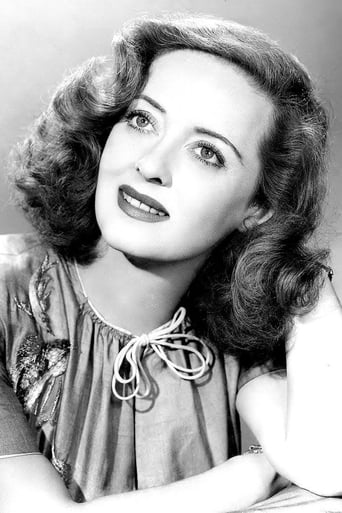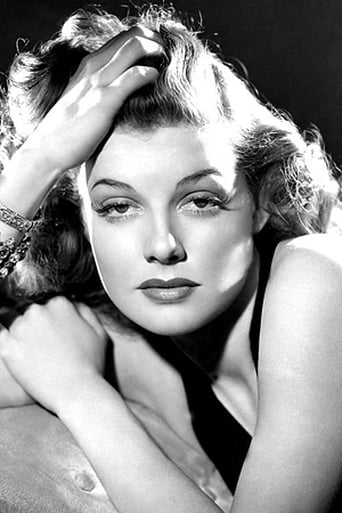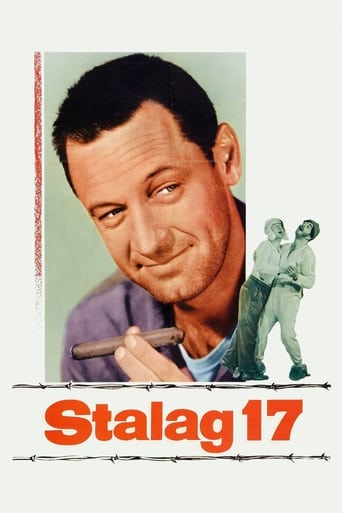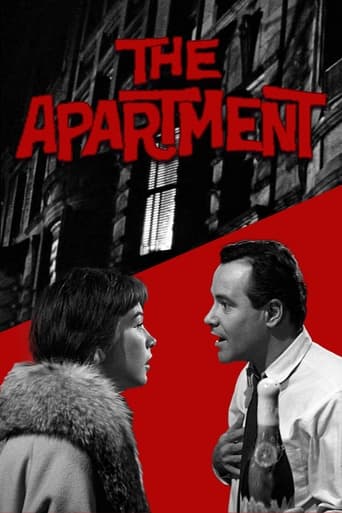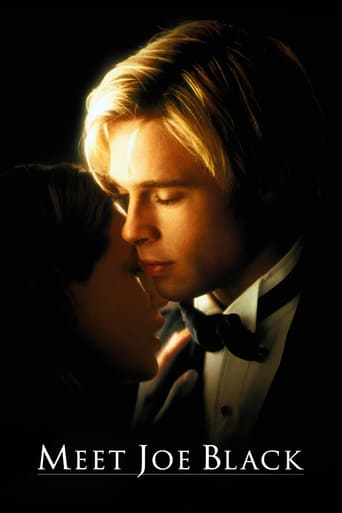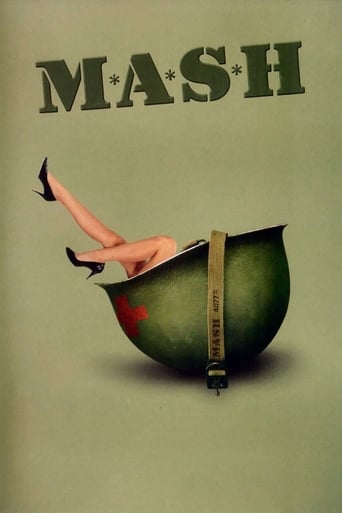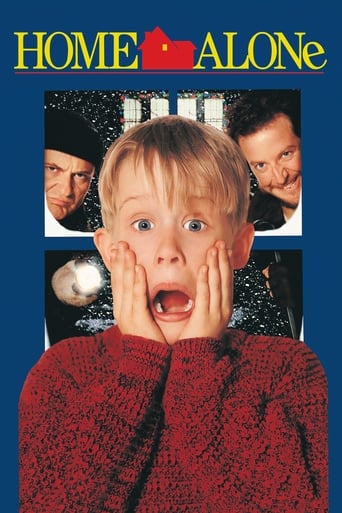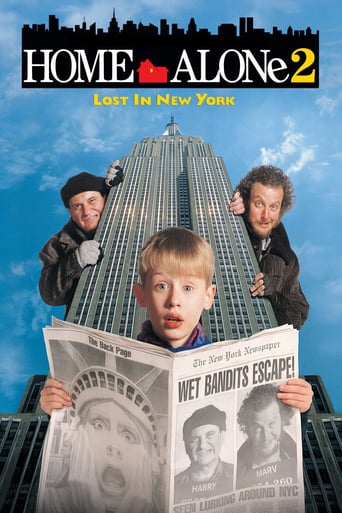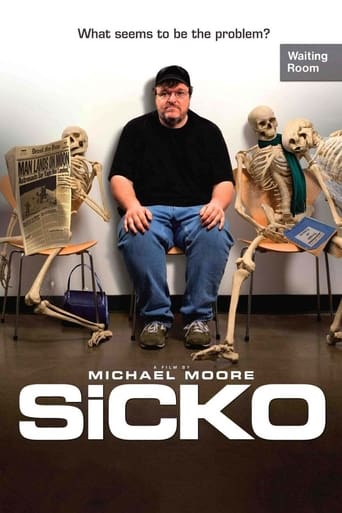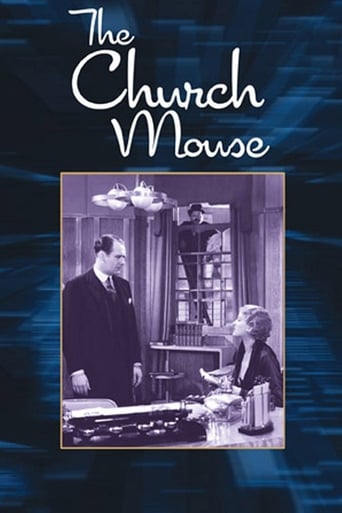The Man Who Came to Dinner (1942)
An acerbic critic wreaks havoc when a hip injury forces him to move in indefinitely with a Midwestern family.
Watch Trailer
Cast


Similar titles
Reviews
Wonderful Movie
Sorry, this movie sucks
Simply A Masterpiece
Please don't spend money on this.
Copyright 24 January 1942 by Warner Brothers Pictures, Inc. New York opening at the Strand: 1 January 1942. U.S. release: 24 December 1941. Australian release: 1 October 1942. 10,447 feet. 116 minutes. (Available on an excellent Warner DVD).BACKGROUND: Moss Hart and George S. Kaufman based this 1939 comedy hit on the well-publicized eccentricities of their friend and boon companion, Alexander Woollcott, raconteur, essayist, and critic. It was even dedicated to him by the authors, "For reasons that are nobody's business." When Woollcott refused to play the leading role on Broadway (a decision he later admitted regretting, when reporters asked why he had suddenly agreed to play himself in a revival), former Yale professor Monty Woolley was engaged to impersonate Whiteside, one of the longest and most demanding character roles ever written. After a somewhat shaky start on opening night, the hitherto unknown actor hit his stride and gave, in the words of the World-Telegram critic, Sidney B. Whipple, "one of the truly great comic performances of our times."NOTES: The play opened on Broadway at the Music Box on 16 October 1939 and ran a highly successful 739 performances. In numerous revivals and stock company presentations, Whiteside has been played by such actors as Clifton Webb, Robert Morley, Alexander Woollcott himself, and even co-author George S. Kaufman – the last in a Bucks County Playhouse production in the summer of 1940 in which Moss Hart played the Noel-Coward-like playwright Beverly Carlton, whilst Harpo Marx himself (speaking on stage for the first time in 25 years) played the Harpo-Marx-like Banjo. On Broadway, Woolley was supported by Edith Atwater, Carol Goodner, John Hoysradt, David Burns and Mary Wickes (who repeats her role for the film version). The producer was Sam H. Harris, the director, George S. Kaufman. Oddly, although Monty Woolley will always be associated with this role, he was not nominated for any awards. In fact the film received absolutely no Hollywood award nominations at all. Incidentally, this was not Woolley's film debut, as many critics thought at the time. He had already appeared in Live, Love and Learn, Nothing Sacred (both 1937), Arsene Lupin Returns, Everybody Sing, Girl of the Golden West, Three Comrades, Lord Jeff, Artists and Models Abroad, Young Dr Kildare (all 1938), Midnight, Man About Town and Dancing Co-Ed (all 1939). The movie did not make Bosley Crowther's Ten Best list in The New York Times, although he did give it an "honorable mention" as a runner- up. Would you believe that Monty Woolley was cited for Best Acting by the National Board of Review in 1942 – but not for his performance in this film, but for The Pied Piper? However The Man Who Came To Dinner did achieve 6th placing in The Film Daily's 1942 poll of American film critics. And it was Third to Yankee Doodle Dandy and King's Row as Warner Brothers' top-grossing domestic release of 1941-42.The play cost Warners a whopping $250,000 to purchase. Davis wanted John Barrymore for Whiteside, but he was too far gone to remember his lines. Actors tested and rejected included Charles Laughton, Robert Benchley, Orson Welles, Fredric March, and Laird Cregar.COMMENT: Despite an improbable and unconvincing Third Act in which this delicious comedy of manners degenerates into farce, this is a marvelously entertaining film. Woolley of course gives the performance of his career, making the most of his pointedly caustic lines. And he is given some solid, but not 100%, support. Some of the players are a mite too theatrical and heavy-handed, while others — particularly, sad to say, Jimmy Durante who is hopeless at impersonating Harpo Marx — are miscast. But we love George Barbier, Mary Wickes and Reginald Gardiner, and it's a joy to see the aristocratic Laura Hope Crews partnering the diminutive Chester Clute. The screenwriters have done little to disguise the stage origins of the piece. There is some opening out and additional material at the beginning, but the characters still basically make their entrances into and exits from the one living-room set – magnificently expanded though it is. The photography sparkles of course and the film editing is smooth as silk, but one wonders exactly what a high- priced director like Keighley actually did beyond saying "Action!" and "Cut!" and "Print it!" I tend to agree with Otis Ferguson's complaint in The New Republic: "In direction, it is often a case of over-emphasis: big takes, exaggeration, confusion, too much noise."But not even inept or misplaced or heavy-handed direction can mar Monty Woolley. The way he pounds out those cleverly scripted, studied insults, he makes The Man solidly entertaining. What more can you ask?
BEWARE OF BOGUS REVIEWS. SOME REVIEWERS HAVE ONLY ONE REVIEWED ONE FILM. WHEN ITS A POSITIVE REVIEW THAT TELLS ME THEY WERE INVOLVED WITH THE FILM. IF ITS A NEGATIVE REVIEW THEN THEY MIGHT HAVE A GRUDGE AGAINST NOW I HAVE REVIEWED OVER 200 HOLIDAY THEME MOVIES. I HAVE NO AGENDA. I AM FARE ABOUT THESE FILMS.During a cross-country lecture tour, notoriously acerbic radio personality Sheridan Whiteside (Monty Woolley) slips on the icy steps of the house of the Stanleys (Grant Mitchell and Billie Burke), a prominent Ohio family, and insists on recuperating in their home during the Christmas holidays. The overbearing, self-centered celebrity soon comes to dominate the lives of the residents and everyone else who enters the household. He encourages young adults Richard (Russell Arms) and June (Elisabeth Fraser) Stanley to pursue their dreams, much to the dismay of their conventional father Ernest.This is a classic film. Its very funny and should be made mandatory viewing! Films today are no longer made this way and that is sad. In 50 years people will still be watching this. Will they still be watching "Office Christmas Party"
In Mesalia, Ohio, the president of the local women's club Mrs. Ernest Stanley (Billie Burke) is the wife of the prominent ball bearings manufacturer Mr. Ernest Stanley (Grant Mitchell) and she is in rapture since the famous lecturer and critic Sheridan Whiteside (Monty Wooley) will have dinner with her family.When Whiteside arrives with his secretary Maggie Cutler (Bette Davis) at Stanley's home, he slip on the ice on the stairway n the front door, he breaks his hip and the diagnosis of the local Dr. Bradley (George Barbier) requires that Whiteside shall stay in a wheelchair confined in the house. The egocentric, selfish and despicable Whiteside demands the control of the entire house and tells that he will sue Mr. Ernest Stanley in an exorbitant amount.While the family lives hell on earth in their own home, Maggie falls in love with the owner of the local newspaper Bert Jefferson (Richard Travis) and quits her position. However, the abusive Whiteside invites the vamp actress Lorraine Sheldon (Ann Sheridan) to meet Bert expecting that she seduces him and Maggie stays with him.I had the greatest expectations with "The Man Who Came to Dinner" based on the name of my favorite actress ever Bette Davis and the IMDb Rating of 7.6. Unfortunately I found this film dated and unfunny, and even overrated. I did not find the abusive behavior of Sheridan Whiteside funny in any moment and his deplorable attitudes are actually nasty. The fool Mrs. Ernest Stanley may deserve part of the cruelties for her silly behavior but anyway I did not laugh while watching this comedy. My vote is five.Title (Brazil): "Satã Jantou Lá em Casa" ("Satan Had Dinner at Home")
Some supposed great films of their time (in this case, the late 30s/early 40s) find fame and reputation. It might even last a decade or two, but in this case this appalling unfunny film should be put into the window seat cavity in (the genuinely funny) ARSENIC AND OLD LACE. The main character Sheridan Whiteside, as played by blustering queen Monty Woolley is utterly tiresome by the third 'hilarious blistering insult', all of which are over worded and each of which are just ridiculous and stupid. If this film is written to be a farce then it succeeds. But it is also just plain mean spirited. Yes Whiteside is supposed to be that but he is so repulsive and abrasive for 100 minutes that had I lived in that house I would have gladly tossed him into the street and happily paid the consequences. THE MAN WHO CAME TO DINNER has not dated well and the film now would provoke curiosity only in bewilderment as audiences ask 'is this supposed to be funny? This guy is a prick'.

